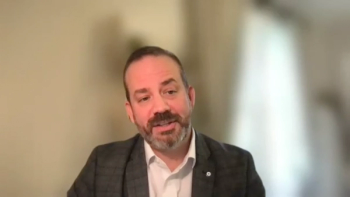
The Clinical Divide: New Year, Similar Healthcare Trends?
Is there anything physicians and healthcare executives can do to reverse rising drug costs and make the cybsersecurity field more attractive?
By now, you’ve all heard the saying, “new year, new me.” And I am sure that we have all made resolutions and have big plans for change in 2019. Sadly, for two highly charged healthcare trends, it looks like it’s going to be the same old story in the new year.
First, more than 30 major pharmaceutical companies are once again planning to increase prescription drug costs. Insulin is already more than tripled in price and now people cannot afford the drugs they need to live. What can healthcare executives and doctors do about it?
Cybersecurity threats are also expected to dominated healthcare headlines this year. Breaches in electronic medical records (EMRs), insurance records and defective security for implantable cardiac devices continue to be a problem. Will we remain virtually defenseless? What can we do?
Welcome to the Clinical Divide. I’m Dr. Kevin Campbell, a Duke-trained cardiologist and CEO of the health data startup company, PaceMate. Every week, this Healthcare Analytics News™ video series examines healthcare tech and medicine’s top news. I bring the views that help physicians and healthcare executives bridge the clinical divide.
For our first topic, at least 30 drug makers are expected to hike their drug prices in 2019. Reuters reported this just last year. This could impact everyone regardless of insurance or socioeconomic status. Drugs that are typically inexpensive to make, like insulin, have quadrupled in price in just the past year. In the case of insulin, patients are rationing their own supplies and deaths have occurred. In fact, the Attorney General of Minnesota is suing the three makers of insulin in a wrongful death case. We’re talking about a drug that people need to live and greedy pharma executives are preventing the development of cheaper biosimilar compounds in order to keep prices high and in fact raise them.
>>
If we don’t do something to stop rising drug costs, we are going to see more and more non-compliant patients who can’t afford their medications for easily treatable diseases. We have got to get pharmaceutical companies to stop this madness before more patients lose their lives — mainly because they can’t pay for their medicine. It’s ridiculous. This is going to take government regulation and is absolutely going to require input from all healthcare stakeholders — both healthcare executives and physicians. And this is going to happen at both the local and national level.
Now let’s switch gears briefly and talk about another emerging danger to patients.
In the last year, cybersecurity has become a hot topic. Cybersecurity in medicine is a real issue. Saint Jude Medical and Abbott has had multiple cyber vulnerabilities identified in their implantable pacemakers and ICDs and has even been sanctioned by the FDA. EMRs and other protected patient data remains at risk to hackers, and security measures are right now not evolving fast enough to protect patient data.
A
>>
Lastly, I’d be remiss if I did not mention that I expect tech and retail heavyweights like Amazon, Google and Apple to make an even bigger splash in the health space in 2019. Last year, we saw the new
While these innovations give patients more access to treatments and devices and put them in the driver’s seat when it comes to information about their own health, we need to make sure that we educate patients and make sure they know how to use these products properly. We want to make sure that they are using the best technology available. We also need to figure out how to make these innovations work for the health systems and physicians alike.
For example, in the case of PaceMate, which I know a lot about, we are able to customize our software to meet the needs of every doctor, every patient and every executive in every healthcare system. We integrate with EMRs and provide easy ways for clinicians to access patient data. For healthcare executives, we are able to provide real time, accurate billing information and allow executives to track the productivity and efficiencies of their cardiac device management clinics. They can also assess the economic health of their particular hospital system. Others are doing the same thing when it comes to Alive Cor, Kardia Band, certainly Amazon. Big and small companies are all together in this.
Thank you again for joining me for this episode of the Clinical Divide. Until next week, I’m Dr. Kevin Campbell, for Healthcare Analytics News™. We are looking forward to a fantastic set of stories in 2019 and if you ever have a suggestion of something you would like me to talk about, let us know.
Get the best insights in healthcare analytics
Related

















































